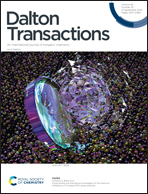Systematic spectroscopic investigation of structural changes and corona formation of bovine serum albumin over magneto-fluorescent nanoparticles†
Abstract
Magneto-fluorescent nanoparticles have attracted great attention because of their dual nature as multimodal imaging probes in various biomedical applications. Particulary, it is desirable to understand how these nanoparticles interact with human serum proteins before they are used in biological systems. In this work, the physiological interactions between magneto-fluorescent nanoparticles (MFNPs) and bovine serum albumin (BSA) were systematically investigated. The present observations identified that the collision of MFNPs and BSA caused fluorescence quenching of BSA. Steady state fluorescence, lifetime and anisotropy measurements in the presence of MFNPs supported dynamic quenching of the BSA emission. Furthermore, in the presence of MFNPs, the conformation changes in the BSA structure indicate merely the secondary structural changes. The findings demonstrated that random interactions and hydrophobic forces play a major role in the dynamic quenching. Further, subsequent coating of BSA over MFNPs result in protein corona formation, as is evident through spectroscopic measurements. In light of the present work, MFNPs could serve a purpose in magnetic separation and optical detection of serum proteins from blood plasma in real-time disease diagnosis.



 Please wait while we load your content...
Please wait while we load your content...